True to Form
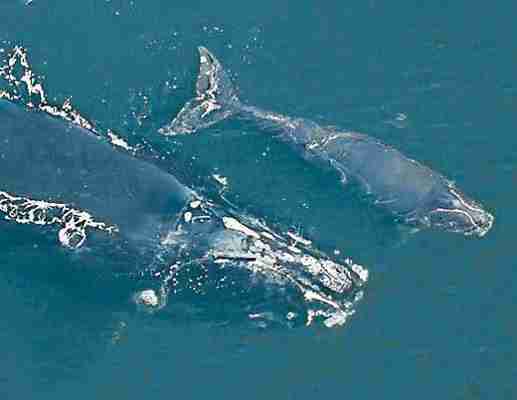
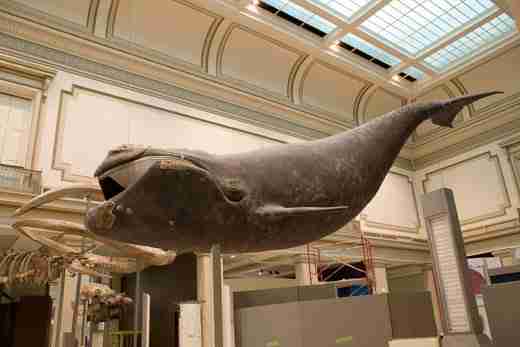
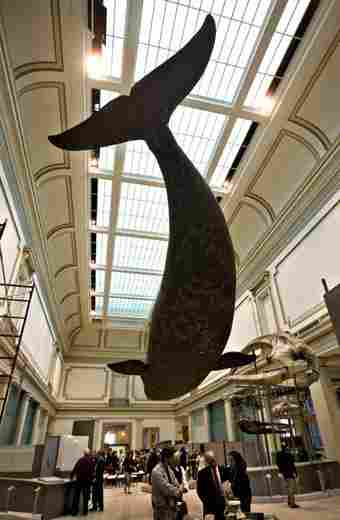
Gazing up at an amazingly lifelike 45-foot-long right whale, visitors to the new Sant Ocean Hall at the National Museum of Natural History (NMNH) may get the idea they are about to become the marine mammal's snack. But right whales feed on plankton, so there's no need to worry. Plus, this one's made of vinyl urethane, requiring occasional dusting but no food whatsoever.
Uniquely, the NMNH's whale model boasts a living, breathing counterpart swimming the seas right now. That creature, dubbed Phoenix by scientists who began tracking her movements by aerial and nautical surveys soon after her birth in 1987, is already a grandmother. She is the most studied of the nearly 400 right whales that inhabit the western part of the North Atlantic.
"Right whales are closely monitored by the Right Whale Consortium," says James Mead, curator of marine mammals at the museum. "The species was hunted widely as far back as the 16th century, continuing through the early 1900s, and their population was extremely reduced. So we can keep careful track of their numbers." (The name right whale may derive from the species' abundant blubber, which made it highly desirable, or "just right.")
Individual whales can be identified by their scars and callosities (white patches on the skin). Sightings are frequent because right whales, which summer in Nova Scotia's Bay of Fundy and winter off the southeastern United States, follow regular migration patterns. They also tend to follow deep-water shipping lanes, where plankton is plentiful. "Every photograph made of a right whale from ships," Mead says, "is another data point. The uniqueness of each whale's markings makes it possible to know quite a lot about an individual like Phoenix."
As any student of Egyptian mythology knows, the phoenix is a bird that rises from its own ashes. It may seem odd to confer that name on a seagoing creature with a blowhole instead of a beak—and little likelihood of bursting into flames. But Phoenix got her name after a near-fatal encounter. "She was tangled in fishing line and seemed to be crashing," Mead says. "Then, somehow, she got herself untangled."
Originally, Mead and his colleague, Charles Potter, had wanted the new exhibit to feature a female blue whale with a 24-foot-long newborn calf, but fire and safety regulations wouldn't permit so large an installation. "Then the right whale became a topic, a smaller and extremely interesting whale," Mead says. "The question was, which right whale? And suddenly someone brought up Phoenix."
Showing up at an artist's studio for a sitting is not something one can reasonably ask of a whale. But because Phoenix is something of a celebrity in scientific circles, she has an abundant photographic portfolio. In the NMNH model, her distinguishing marks, even her whiskers, have been meticulously reproduced.
The faithful replica is the work of Terry Chase and his associates at Chase Studio on Bull Shoals Lake in southern Missouri. A designer and builder of museum exhibits, Chase has crafted thousands of models for scores of clients around the world. Phoenix posed special challenges: the monstrous whale had to fit through the museum's 16-foot-tall doors and be light enough to hang from the ceiling. Working with 1/12th-scale models and consulting with biologists from the New England Aquarium and marine mammal specialists at NMNH, Chase and his fellow artists labored on the model for three years. "We had measurements from beached right whales; every little detail is true to photographs of Phoenix."
Phoenix features an interior structure of metal supports and cables, described by its creator as "spidery." The seven sections, sheathed in vinyl urethane, are joined so invisibly that a cosmetic surgeon would be proud to claim the work.
"At 2,700 pounds, the whole model weighs less than the jawbone of an actual right whale," Chase says. "It's the most accurate whale model ever done."
Owen Edwards is a freelance writer and author of the book Elegant Solutions .
All That Glitters
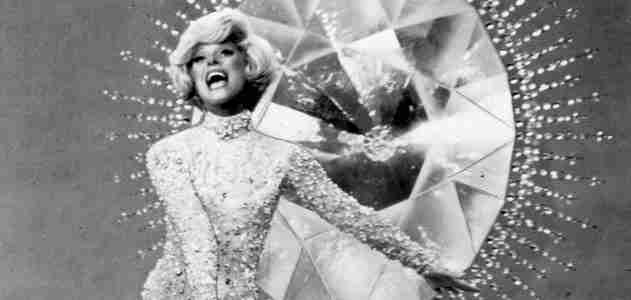
When broadway star Carol Channing sang "Diamonds Are a Girl's Best Friend" in the 1974 musical Lorelei , all that glittered was not what it seemed. Designer Bob Mackie created the show's eye-catching costumes, including a bejeweled dress for the character Lorelei Lee's big number. (Channing had gotten her big break in the Anita Loos play Gentlemen Prefer Blondes in 1949 and starred in its revival, Lorelei , 25 years later.) One of Mackie's nicknames is the Rajah of Rhinestones: what sparkled so plentifully on the gown were no more diamonds than a stage set for Hamlet could be said to be Elsinore Castle.
The showstopper of a dress, which Channing wore for all of the production's 320 Broadway performances, now resides within the collections of the Smithsonian's National Museum of American History (NMAH). Mackie's extravaganza, with its hailstorm of stones from Czechoslovakia, weighs about 40 pounds. "The first time I took a bow in that dress," Channing told me recently, "I fell over forward and almost broke my teeth." During the production, Channing had to make a quick change between scenes. "I told Bob that getting out of that dress in one minute was almost impossible. So he said, ‘Take off the sleeves.'" (Channing would wear the costume in both configurations.)
But it wasn't until late 2007 that the dress took on a life of its own. Channing was scheduled to donate the gown to NMAH at a January 2008 ceremony in North Hollywood. The event would honor distinguished women, showbiz luminaries all, who had offered items to NMAH. Angela Lansbury, for example, contributed her typewriter from television's "Murder, She Wrote." Tippi Hedren donated her script from Alfred Hitchcock's The Birds . And Julie Newmar, of the TV series "Batman," turned over her slinky Catwoman costume.
Channing's plan, however, was nearly derailed. In September 2007, as preparations were finalized, Channing was in Los Angeles, where the dress was to be appraised. When she and her husband, real estate entrepreneur Harry Kullijian, arrived at the Renaissance Hotel, a suitcase containing the dress was placed on a luggage carrier. When the valises didn't arrive at the room, Kullijian went down to the lobby and spotted the carrier: the dress was missing. "I let out a war whoop you wouldn't believe," Kullijian recalls.
The Los Angeles police were notified. Not long afterward, a man called Channing's room, demanding a ransom of $25,000 for the dress. No deal, Harry said. The next day, a stranger appeared at the hotel, claiming that he had found the costume in a city park. "I thought this guy was a hero," Kullijian says, "and went to the front desk to get some money to reward him."
At that point, Channing recalls, the situation began to deteriorate: "The man kept poking me in the chest and asking for money." When the police arrived, they immediately recognized Kullijian's "hero" as someone with a long arrest record. The alleged thief was taken into custody but no charges were brought for lack of evidence.
One question that has not been answered is how he (or whoever did it) happened to nab the dress in the first place. Channing's longtime agent, Harlan Boll, believes he has the answer. At the time Channing checked into the hotel, Boll recalls, a bellhop had inquired why one of her suitcases was so heavy. Channing replied, "Because the diamond dress is in there." That offhand remark, Boll thinks, could very well have set everything in motion. The thief may simply have overheard—and drawn a wrong conclusion. (It would, of course, turn out that rhinestones were not a guy's best friend.)
Channing describes the strange escapade as the tale of the "lost-and-found dress." Ultimately, during a gala ceremony at North Hollywood's landmark El Portal Theatre on the night of January 28, Channing was able to turn the dress over to the Smithsonian—right on schedule.
Owen Edwards is a freelance writer and author of the book Elegant Solutions .
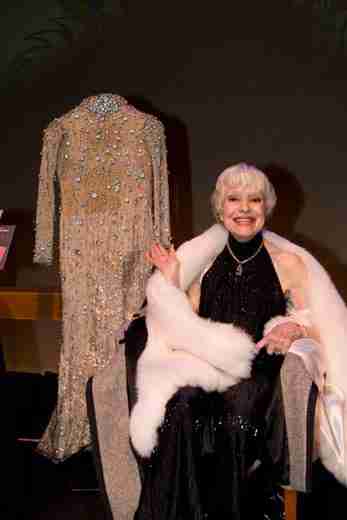



Post a Comment